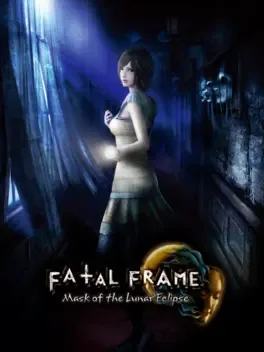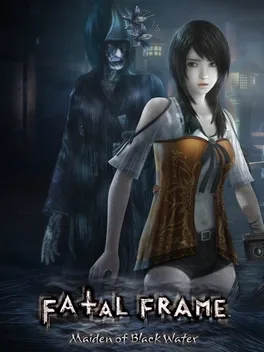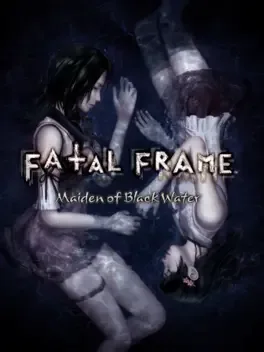Fatal Frame

Buy
Parent game

Fatal Frame is the first game of the Fatal Frame series, introducing the franchise's unique premise of fighting ghosts with a special camera. Fatal Frame was the first to introduce the innovative use of an old-style camera as the primary weapon. In addition to navigating the main characters around the mansion grounds, players are able to enter Viewfinder Mode, where the camera is raised and the view changes to that of the camera's frame. In viewfinder mode the player is able to snap photographs of ghosts, both violent and benign, which is the main method of progressing through the game. Items are also available, some being consumable and most being key items needed to unlock doors, complete tasks or solve puzzles. Puzzles are encountered frequently in the game, some being based on the same concept but becoming progressively more difficult. The varying difficulty settings of the game (Easy, Normal, Hard, Nightmare, or Fatal (Xbox only)) determine the amount of consumable items scattered throughout the mansion and how formidable the enemies are. The main horror aspect of the game is, undoubtedly, the ghosts. The mechanics programmed for the ghosts allow them to float ethereally through the air, walls and floors, and even teleport, allowing them many ways to attack the player. The ghosts' appearances are usually inspired by their deaths or by Japanese stigmas of horror, which, some argue, are particularily chilling. The game, depending on which console it is played on, offers two endings. Upon completion of the game, a ranking is given based on total time taken, points accumulated and other categories. The player is also given rewards and unlockables, such as alternate costumes and camera functions, depending on what difficulty was beaten, how much of the Ghost List was completed and other criteria. Beating the game also unlocks Battle Mode, where the player is faced with fighting specific ghosts, and is rewarded with points towards purchasing unlockables. An option is also given where the game can be replayed with all equipment, upgrades and unlockables carried over.
Part of collection:
Fatal Frame
(last 3 games)

When the protagonists were children, they visited the isolated island of "Rogetsu Isle" to celebrate the Rogetsu Festival. In the midst of the celebrations, they suddenly disappeared. The game begins when the girls decide to go back and visit the island again in search of their lost memories of that day. Attempt to repel encroaching ghosts, relying solely on the faint glow of a flashlight and the Camera Obscura; a camera with the ability to photograph unimaginable things.

Experience all of the horror from the original FATAL FRAME: Maiden of Black Water with new remastered visuals, new costumes and photo mode features. The main adventure consists of three interconnected stories which lead the player to uncover the horrifying truth behind a string of recent tragic deaths taking place in a forest with an infamous history. Take on the role of one of three people with the power of the Camera Obscura and the ability to see the shadows of those spirited away. The story will take you on a frightening adventure through the ruins of an eerie inn, a shrine filled with life-size dolls, and a lake full of dead priestesses.

Fatal Frame: Maiden of Black Water is a survival horror video game developed by Koei Tecmo and published by Nintendo for the Wii U. The fifth main entry in the Fatal Frame series, it was released in Japan in September 2014 and worldwide in October 2015. As with previous games in the series, players navigate areas filled with hostile ghosts which must be fought by taking photographs using the Camera Obscura, which is directly controlled using the Wii U gamepad. A post-endgame story featuring Ayane, a character from the company's Dead or Alive series, is also available featuring altered gameplay mechanics. The story, which is set on the fictional Hikami Mountain, focuses on three protagonists who are drawn into supernatural events revolving the area, including an ancient ritual to seal away Yomi, a malevolent force corrupting the surrounding spirits that is tied to the fate of the titular shrine maiden Ouse Kurosawa. Planning for the game began in 2011, during the projection of the Wii remake of Crimson Butterfly. The game was first proposed by series co-creator Keisuke Kikuchi when he saw the Wii U hardware and the possibilities of the gamepad becoming the Camera Obscura. The game was a joint production effort between Koei Tecmo and Nintendo Software Planning & Development, with Kikuchi and fellow co-creator Makoto Shibata returning as to their respective posts of producer and director, together with staff from the previous series entry Mask of the Lunar Eclipse and developers new to the series. The cast went through several revisions during development, while the staff experimented with the capacities of the new hardware. As with previous games, it features a theme song by Tsuki Amano. Upon release, the game received critical acclaim for its use of the gamepad and dark atmosphere, while opinions were mixed on its story, portrayal of its female characters, and other aspects such as its pacing and controls.